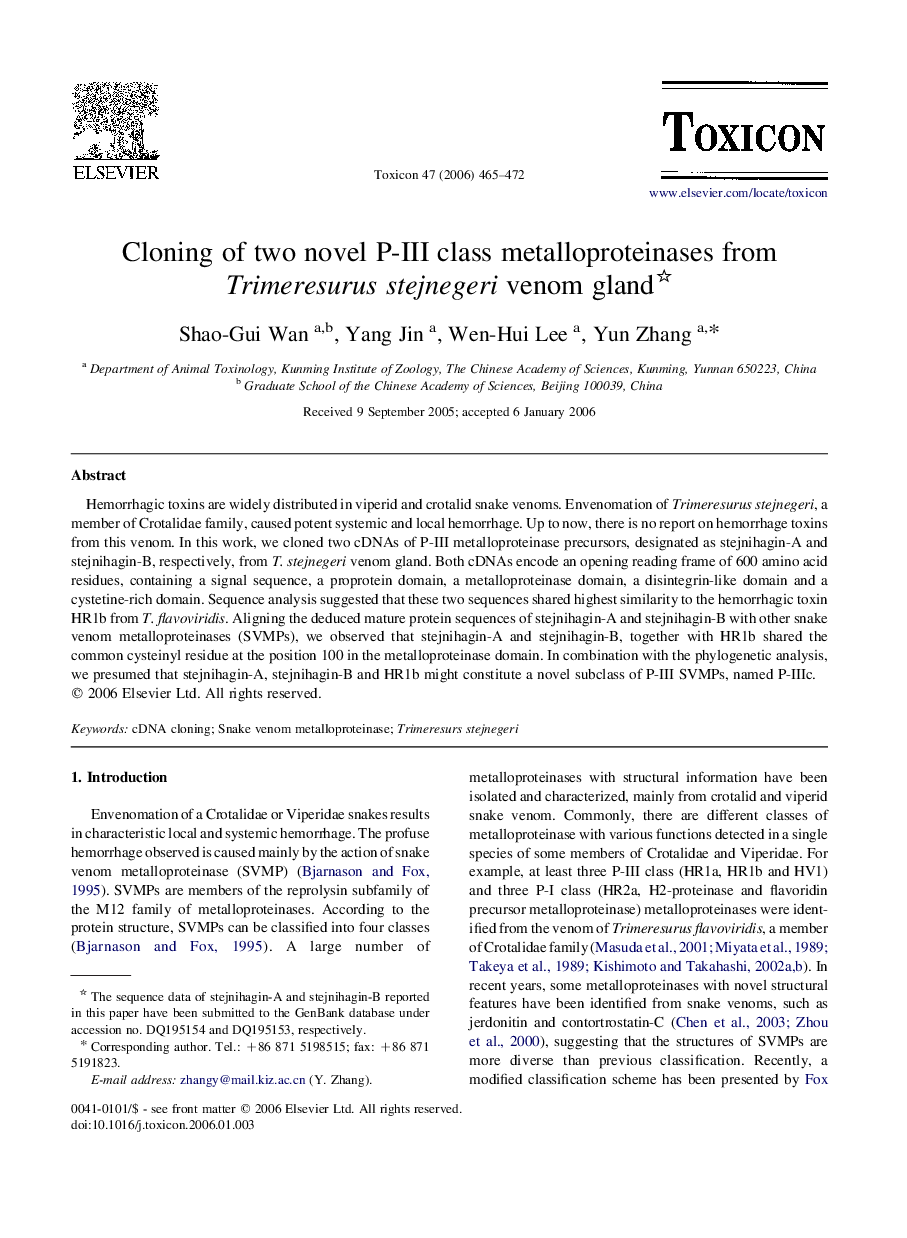| Article ID | Journal | Published Year | Pages | File Type |
|---|---|---|---|---|
| 2066260 | Toxicon | 2006 | 8 Pages |
Hemorrhagic toxins are widely distributed in viperid and crotalid snake venoms. Envenomation of Trimeresurus stejnegeri, a member of Crotalidae family, caused potent systemic and local hemorrhage. Up to now, there is no report on hemorrhage toxins from this venom. In this work, we cloned two cDNAs of P-III metalloproteinase precursors, designated as stejnihagin-A and stejnihagin-B, respectively, from T. stejnegeri venom gland. Both cDNAs encode an opening reading frame of 600 amino acid residues, containing a signal sequence, a proprotein domain, a metalloproteinase domain, a disintegrin-like domain and a cystetine-rich domain. Sequence analysis suggested that these two sequences shared highest similarity to the hemorrhagic toxin HR1b from T. flavoviridis. Aligning the deduced mature protein sequences of stejnihagin-A and stejnihagin-B with other snake venom metalloproteinases (SVMPs), we observed that stejnihagin-A and stejnihagin-B, together with HR1b shared the common cysteinyl residue at the position 100 in the metalloproteinase domain. In combination with the phylogenetic analysis, we presumed that stejnihagin-A, stejnihagin-B and HR1b might constitute a novel subclass of P-III SVMPs, named P-IIIc.
